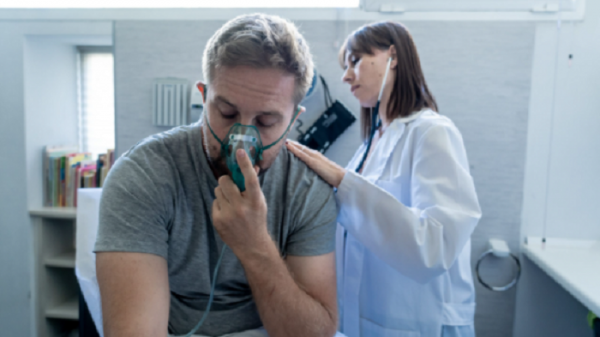What should you do when COVID-19 spreads to Lungs?

It is in the second week of being infected with COVID-19, that the infection may spread to your lungs. The most severe complications of COVID-19 begin to appear when the infection spreads to your lungs. It is at this time when your condition may start deteriorating and you may begin to experience symptoms like severe cough and other mild pneumonia-like symptoms.
Apart from this, there are other signs that may signal that the infection has spread to the lungs. Dr Rommel Tickoo, Associate Director, Internal Medicine, Max Healthcare, says that inflammatory markers in the blood need to be regularly monitored to see if your infection is under control or not.
Signs that tell COVID-19 may have spread to the lungs
COVID-19 is essentially a respiratory disease which causes symptoms like breathing difficulty, cough and fever. As mentioned above, it somewhere around the second week of being infected with COVID-19, that the virus may spread to the lungs.
“If you have consistent fever, above 100 for 48 to 72 hours, and if you have inflammatory markers in your blood, most importantly high C-reactive protein (CRP) levels (above 10), and dipping oxygen saturation (less than 94), these are signs that may signal that infection has spread to the lungs,” Dr Tickoo tells .
Inflammatory markers in the blood
C-reactive protein (CRP) (marker for inflammation in the body), ferritin (acute phase reactant), and D-dimer (helps in ruling out a harmful blood clot and tells if you need a blood thinner or not) are blood tests which can tell about inflammatory markers in the blood.
“You might not have a lot of symptoms, but if your inflammatory markers are high, you need to have an aggressive approach. The doctors may recommend a CT scan to check if there is mild pneumonia. All of this helps in controlling the infection on time,” says Dr Tickoo.
Symptoms to watch out for
Patients who have tested positive for COVID-19 will have symptoms like dry cough, breathlessness, fever, loss of sense of taste and smell, tiredness and chest pain amongst others.
In case the infection has spread to the lungs, it may show symptoms like persistent cough and fever, chest discomfort, breathless on exertion, low oxygen saturation and blood inflammatory markers mentioned above. “It usually happens after five days of the infection,” Dr Tickoo adds.
Important to be in constant touch with the doctor
A person who has tested positive for COVID-19 is most likely to already be in constant touch with the doctor. “Once you have involvement in the lungs, the doctor will take a call if you need a CT scan, or if need to be prescribed some steroids, or if you need admission in the hospital for appropriate treatment,” he explains.
If the condition progresses to be more severe with complications, patients may land up in Intensive Care Unit (ICU) or have respiratory failure. However, in majority of the cases, people who don’t have severe symptoms and have mild pneumonia can get better with medicines and steroids, Dr Tickoo shares.
About 20% of the patients who have tested positive for COVID-19 have lung involvement. And in majority of the cases, these complications can be controlled (at home or at the hospital, depending on their condition) and the mortality rate is low.
Source: NDTV





























Leave a Reply